|
Fisher
Body - Home
Fisher Body Craftsmanship Goes to War
Fisher Body - Craftsmanship
Fisher Body - Aircraft
Fisher Body - Aircraft
Instruments
Fisher Body - Guns
Fisher Body - Tanks
Fisher Body - Miscellaneous
The Plants
Fisher Body WWII Plant Database
Cleveland Plant #1, OH Plant
Cleveland Plant #2, OH Plant
Detroit Aircraft Unit,
Detroit, MI
Detroit Die and Machine Plant
Fleetwood, Detroit, MI Plant
Flint Plant #1, MI Plant
Grand Blanc, MI Tank Arsenal
Grand Rapids, MI Plant
Lansing, MI Plant
Memphis, TN Plant
Ternstedt Manufacturing Division,
Detroit, MI
Grand Blanc Tank Arsenal Built Tanks and Tank Destroyers
Grand Blanc
built M4A2 Sherman Tank Photos
Grand Blanc
Built M4A3 Tank Photos
Grand
Blanc M10 Tank Destroyer Photos
Grand
Rapids Fisher Body Stamping Plant - General Motors Corporation in World
Two
Wyoming, MI
1936-2011
Rest in Peace
Gone but not Forgotten!!!
This page updated
4-8-2020.
The Fisher Body Grand Rapids Plant was
actually in Wyoming, MI south of Grand Rapids. The
building of the plant was announced on December 20, 1935 as a huge
economic holiday present for the area's unemployed workers during
the dark days of the Great Depression. 2,000 employees were hired
in 1936 to operate the punch presses turning out body parts would earn
$40 a week. This was good money in 1935.

The Grand Rapids Fisher Body Stamping Plant won the
Army-Navy "E" for Excellence Award on July 10, 1945.
Fisher Body Grand Rapids
World War Two Production:
(550) 120mm M1 Anti-Aircraft guns - This was the signature war product for
Fisher Body Grand Rapids. It was the sole producer of 120mm M1
Anti-Aircraft gun which entered service with the US Army in the
Philippines in 1945. This weapon was in service with the US Army
from
1944 until 1960. Army National Guard units were the last to use
it, and it was replaced by the Nike missile system.
Fisher Body Grand Rapids also built components
and assemblies for B-25,
B-29, XP-75 aircraft, and M4, M10, M26, M8, M24 tanks. It produced
five inch Naval Gun Breech Housings, (551,772) 155mm HE
Shells, Machine Tools, and 90mm AA Gun parts along with the loaders and
rammers for the 120mm M1 Anti-Aircraft gun. In February 1944
the U.S. Navy requested that Fisher Body fabricate 2,596 M8 tank turrets
that were modified for a 75mm howitzer. These would be mounted on
the LVT(4)-A 75mm Amtrac. The work was originally assigned to
Ternstedt, but do to the high work load at this plant, most of the work
was transferred to Grand Rapids.

The Fisher Body Grand Rapids plant looking
west not long after it was built in 1936. The opening of the plant
generated highly valued jobs for the Grand Rapids area during the middle of the
depression. Buchanan Avenue SW runs north-south along the east side of the plant, and 36th Street is the east-west
road in front of the plant in the far right of the photo. Today, US
131 is just west of the railroad tracks.
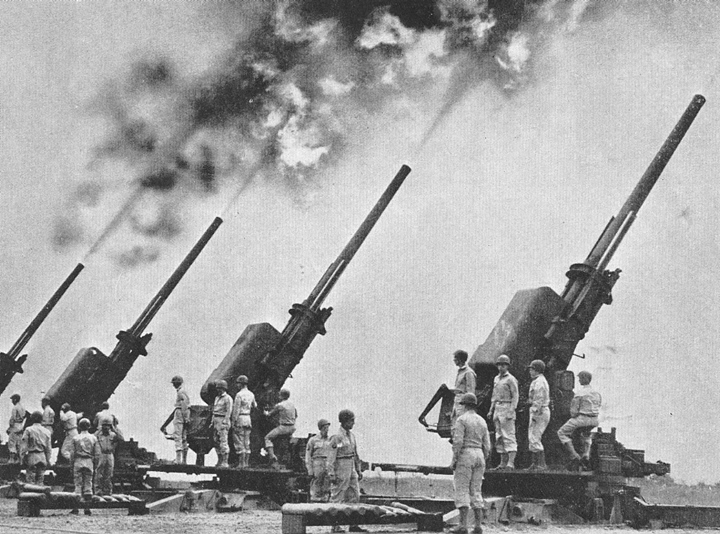
Four Fisher Body Grand Rapids-built 120mm
anti-aircraft guns all firing at the same time. Photo added
5-8-2020.

The signature WWII product for Fisher Body Grand Rapids was the 120mm M1
anti-aircraft gun. In this photo fifteen of the 550 guns the
plant built await shipment. Photo added 5-14-2018.

The huge outrigger base is being machined in
three locations. Photo added 5-22-2018.

The 120mm gun barrel is being installed on
the gun. Note the outrigger base has had the outrigger arms
installed, and there has been a large amount of installation of other
parts in preparation for adding the barrel. Photo added 5-22-2018.

Fisher Body did more that just build the 120mm guns from prints.
It designed the automatic loader and rammer which operated in any angle
of elevation. Photo added 5-22-2018.

After the barrel was installed there was more work to complete the gun.
Photo added 5-22-2018.
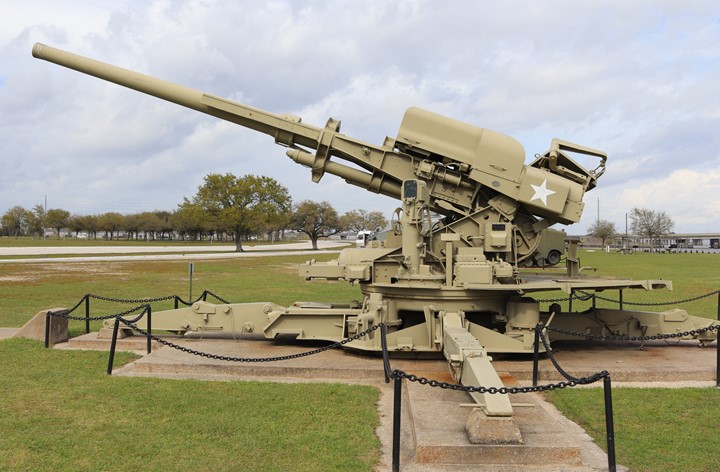
This is one of the few surviving 120mm M1
anti-aircraft guns of the 550 built by Fisher Body Grand Rapids during
WWII. It is on display at the USS Alabama in Mobile, AL.
Author's photo added 3-20-2018.
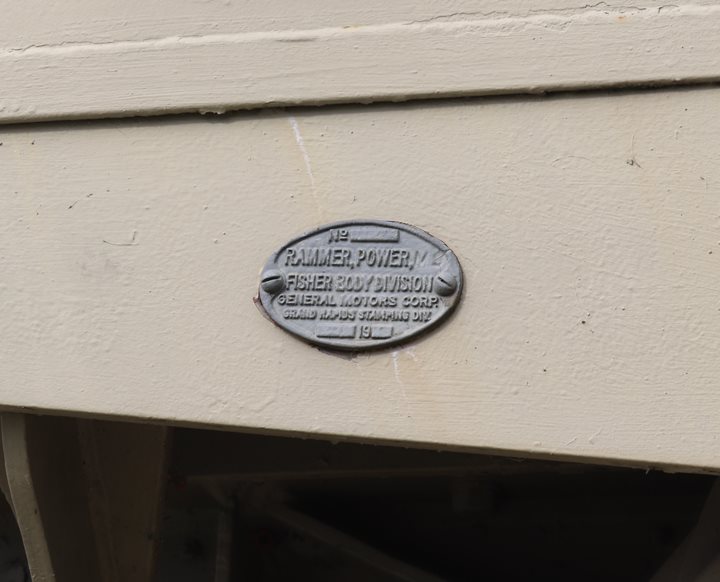
The M1120mm anti-aircraft gun was the
signature weapon produced by Fisher Body Grand Rapids Stamping Plant in
WWII. Author's photo added 3-20-2018.
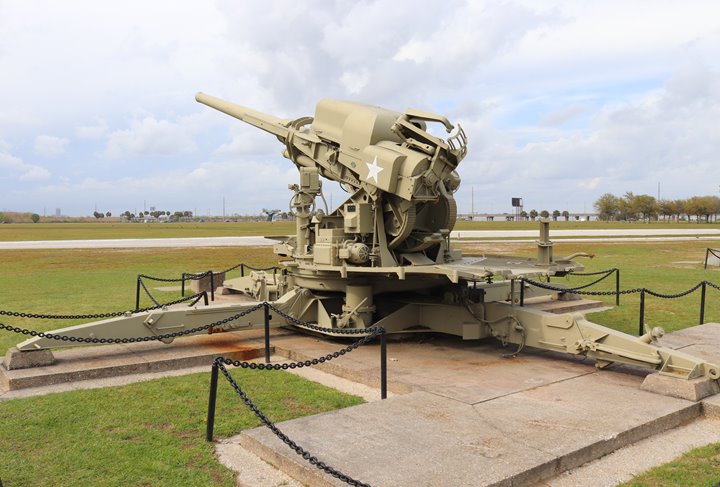
Author's photo added 3-20-2018.
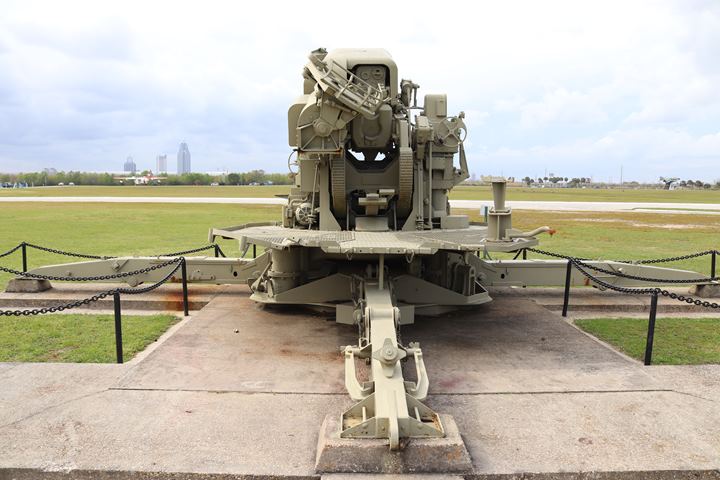
Author's photo added 3-20-2018.
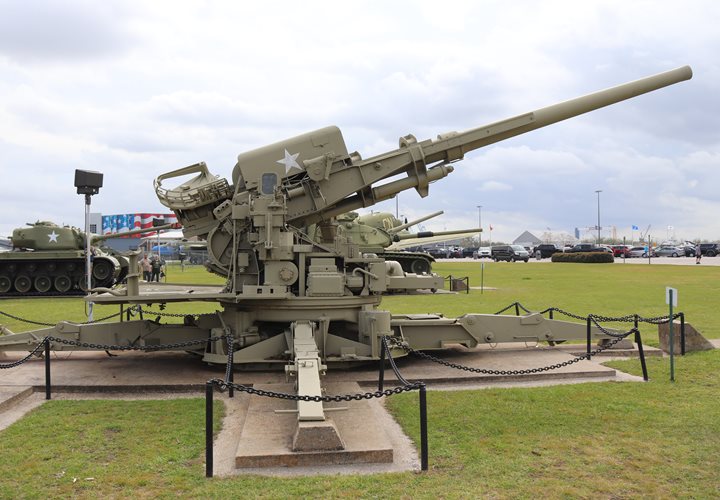
Author's photo added 3-20-2018.
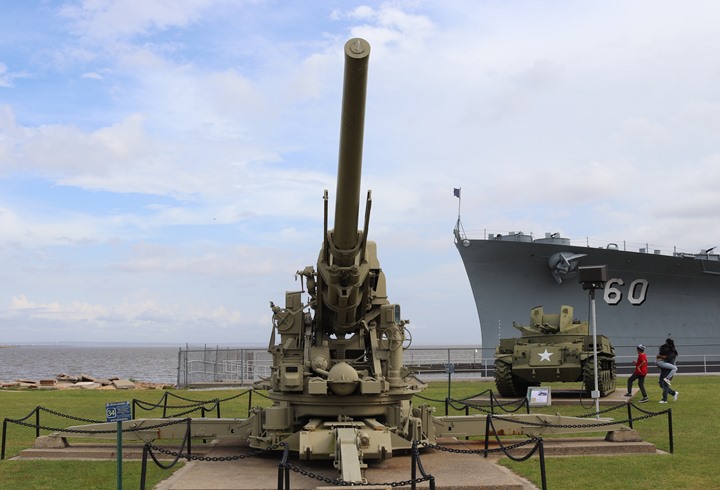
Author's photo added 3-20-2018.
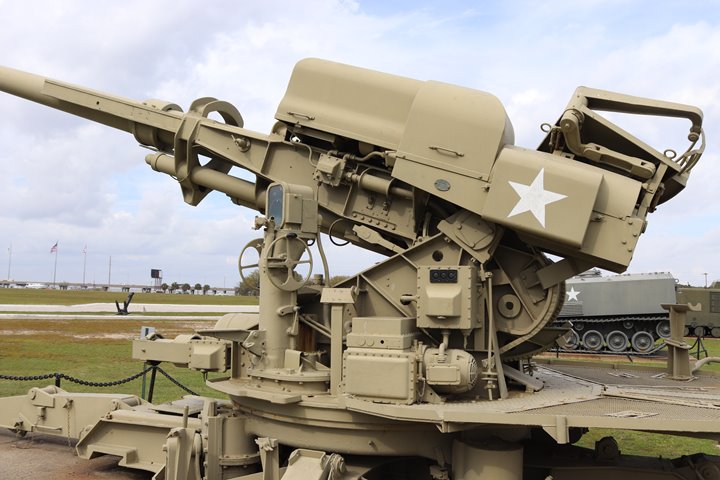
Author's photo added 3-20-2018.
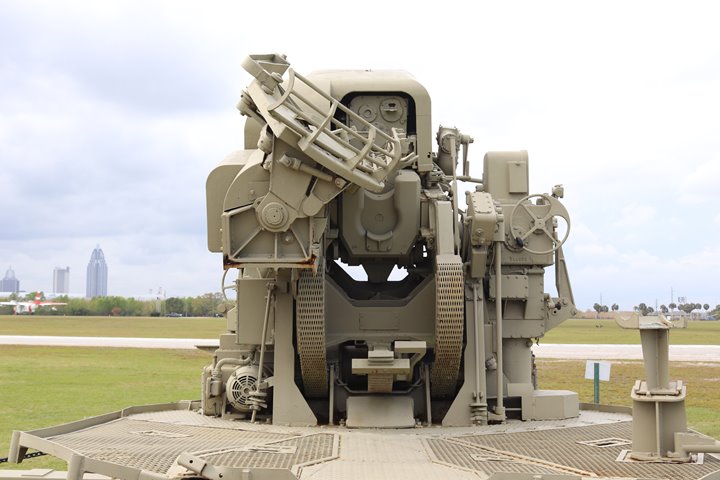
Author's photo added 3-20-2018.
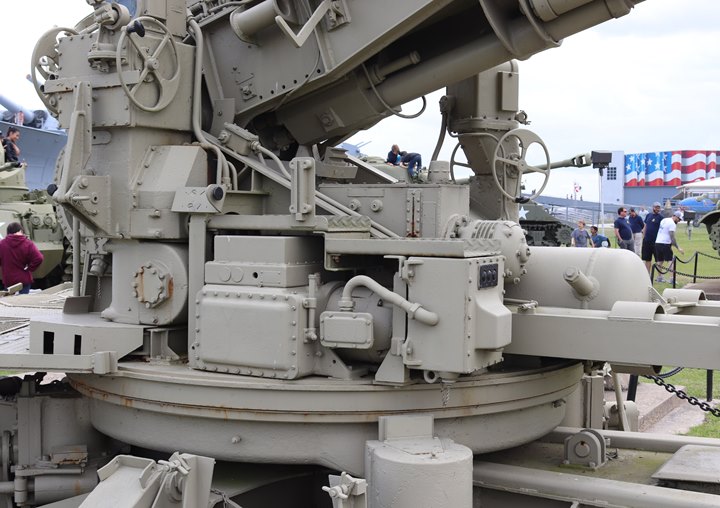
Author's photo added 3-20-2018.
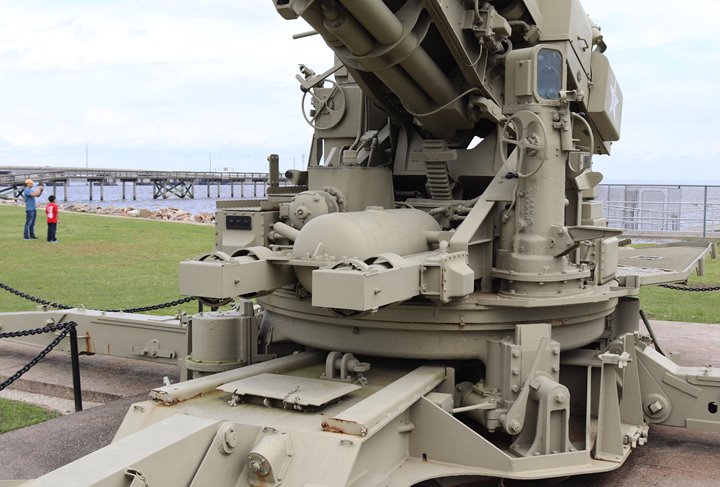
Author's photo added 3-20-2018.
One of the last known uses for the Fisher Body
Grand Rapids built M1 120mm anti-aircraft gun was at the Hanford
Engineering Works plutonium production reactor complex along the
Columbia River in Washington. In the early 1950s, 16 batteries of
four M1 anti-aircraft guns were set up around the facility as the Cold
War heated up. 5,000 soldiers of the 501st, 518th, and 519th AAA
Battalions manned the 64 M1a against an air attack from the Soviet
Union. In 1955 the M1s were phased out and replaced by Nike Ajax
anti-aircraft missiles.
The following table shows the increased use
LVTs and LVT(A)a as they became more available during the U.S. Navy's
campaign during World War Two in the Central Pacific. LVTs were
utilized at Guadalcanal for the transport of supplies to the island, not
in the initial assault waves. As the war continued the LVTs became
very important where the islands had coral atolls that prevented the
36-foot wooden landing craft such as the LCP(L)s, LCVs, LCP(R)s and
LCVPs from crossing. Even with their low draft, the landing craft
would get hung up on the atolls. The LVTs with their tracks could
cross over the reef. A shuttle system was instituted where the
wooden landing craft would bring marines and soldiers from the troop
transports to the atoll. There the marines and soldiers would
transfer to the LVTs which would then take them to the beach.
Transfer of the troops at the reef called for previous training by all
involved to safely and efficiently make the troop transfer. Add a
heavy surf and it became even more a dangerous endeavor than normal.
Neither Iwo Jima nor Okinawa had reefs, but by the end of the war the
LVT had become an important part of the landing assault forces.
The LVT(A)s would lead the troop carrying LVTs into the beach.
|
Number of LVTs
and LVT(A)s used in the assault waves during the Central Pacific
Campaign |
|
Island |
Date |
LVT |
LVT(A) |
|
Guadalcanal |
8-1942 |
0 |
0 |
|
Tarawa |
11-1943 |
87 |
0 |
|
Saipan |
6-1944 |
594 |
138 |
| Guam |
7-1944 |
381 |
75 |
|
Tinian |
7-1944 |
453 |
66 |
|
Peleliu |
9-1944 |
223 |
72 |
| Iwo
Jima |
2-1945 |
380 |
68 |
|
Okinawa |
4-1945 |
872 |
92 |
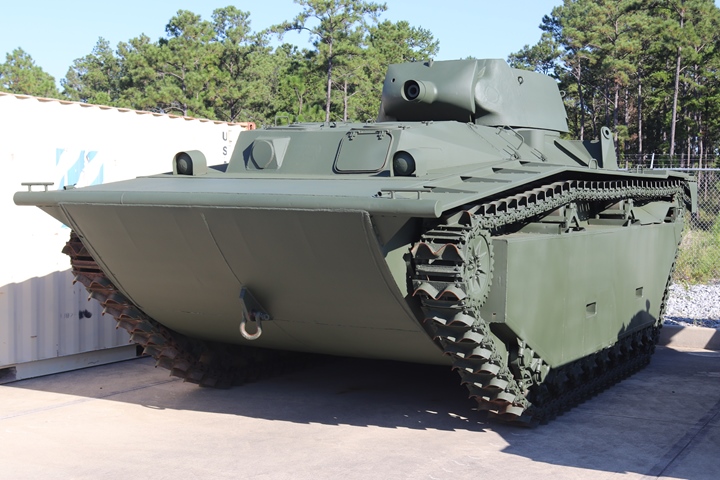
In 1944 Fisher Body Grand Rapids
fabricated most of 2,596 M8 tank turrets with a 75mm howitzer that were
installed on LVT(A)-4 Amtracs. This LVT(A)-4 is part of the
U.S. Army Armor and Cavalry Collection, Fort Benning, GA. Author's
photo added 12-18-2019.

Author's photo added 12-18-2019.

This give a close-up view of the Fisher Body
Grand Rapids-built turret. Author's photo added 12-18-2019.

Author's photo added 12-18-2019.

This LVT(A)-4 is on display at the American
Heritage Museum in Hudson, MA. Author's photo added 12-18-2019.

Author's photo added 12-18-2019.

Author's photo added 12-18-2019.
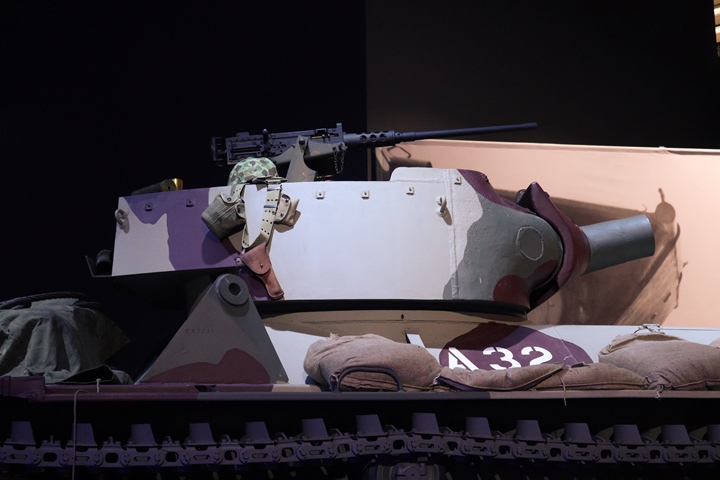
Author's photo added 12-18-2019.

Author's photo added 12-18-2019.
-4-75mm-84w-1.jpg)
LVT(A)-4s with Fisher Body Grand Rapids-built 75mm
turrets heading for the Okinawa beachhead on April 1, 1945. Photo
added 9-6-2018.

In April 1944 Army Ordnance requested Fisher
Body to produce 155mm artillery shells. Grand Rapids set up one
mile of conveyor lines for movement of the shells from one operation to
the next. It produced the first 155mm shell in September;
and began production in October, a month ahead of schedule. Fisher
Body Grand Rapids did this after having to purchase new machine tools and
large heat treat furnaces to manufacture the shells. Two 300-ton
presses were needed to shape the noses on the shells. When
production stopped at the end of May 1945, the plant had produced
551,772 shells. 116,937 were produced in May 1945, the peak production
month for Fisher Body Grand Rapids. These two examples are at the
Museum of American Armor on Long Island, NY. Photo courtesy of
Rudy Lev.
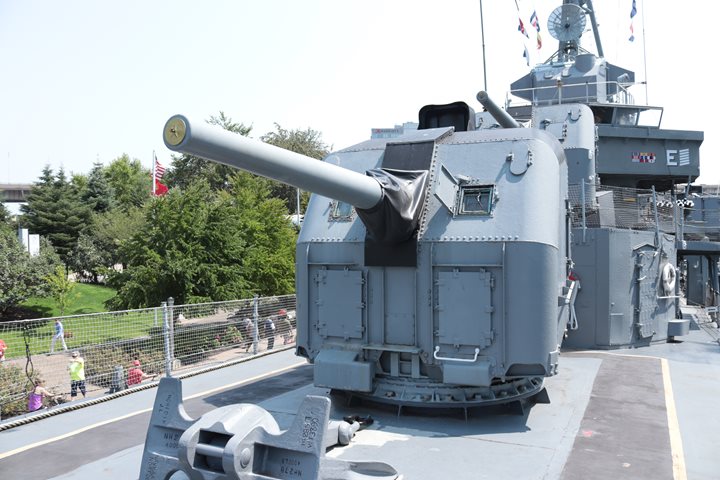
Fisher Body Grand Rapids produced naval gun breeches for five-inch, 38 caliber guns like this one. This five- inch gun can be
seen at the USS Sullivans at the Buffalo and Erie County Naval and
Military Park in Buffalo, NY. Author's photo added 11-10-2017.
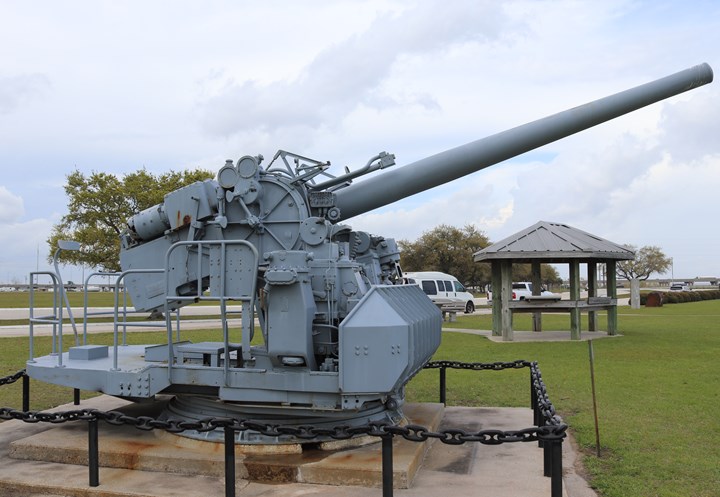
This is one of four five-inch, 38 caliber
naval guns without the turret armor, also on display at the USS Alabama.
Many non-combat ships had five-inch guns like these for defensive
protection. This allows for an excellent inspection of the weapon. Author's photo added 3-20-2018.
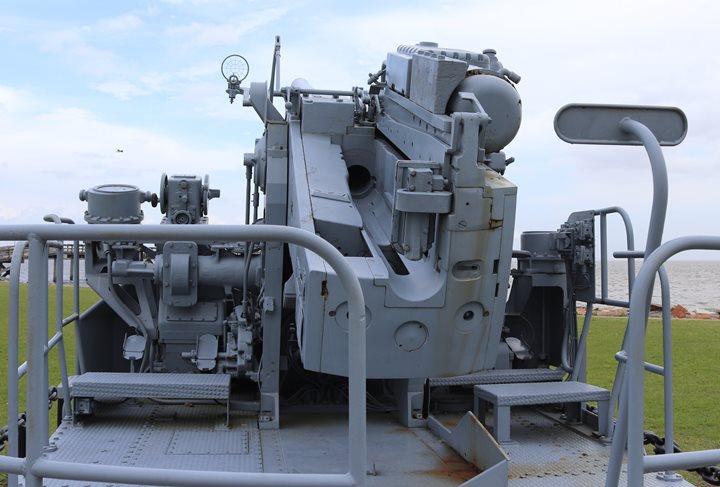
The gun mechanism was a complicated and
precision device consisting of 218 components. The Fisher Body
built breech housing weighed 2,932 pounds and is component in the center
of the gun mechanism with the opening for the five inch round to which
the remaining 217 components were added. Author's photo added 3-20-2018.
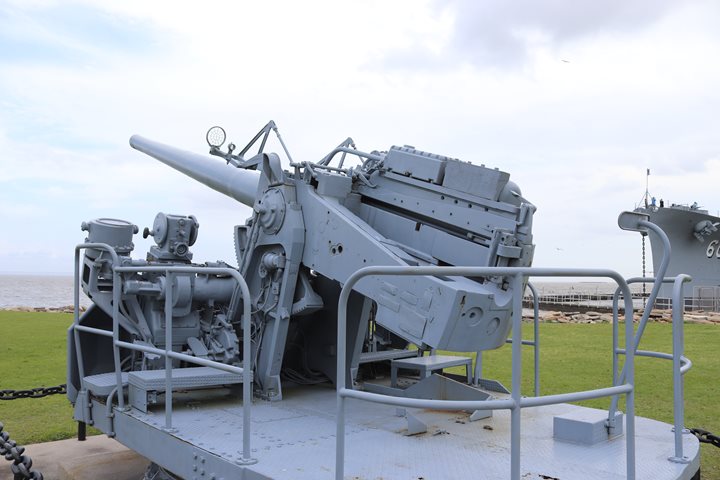
Author's photo added
3-20-2018.
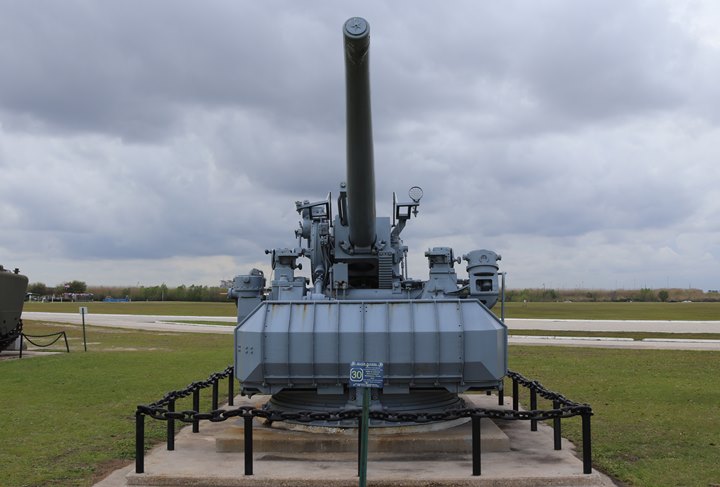
Author's photo added 3-20-2018.
Below are weapons and equipment built
by other GM divisions.
Fisher
Body Grand Rapids supplied
components and subassemblies for these weapons.
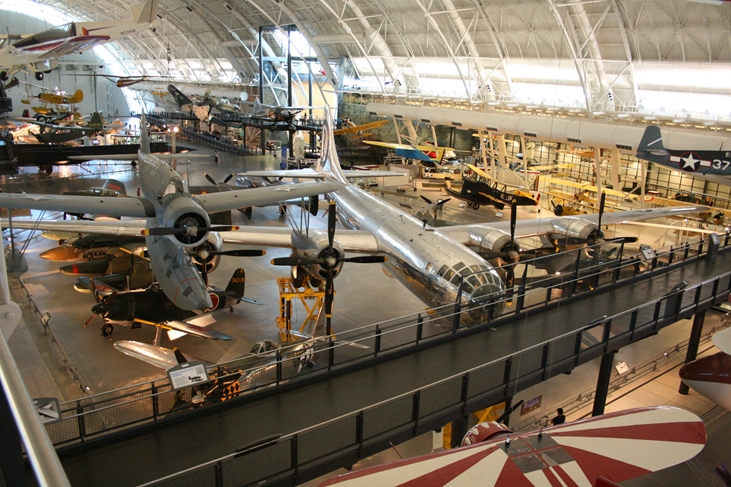
Fisher Body made components for the B-29
program. Author's photo.
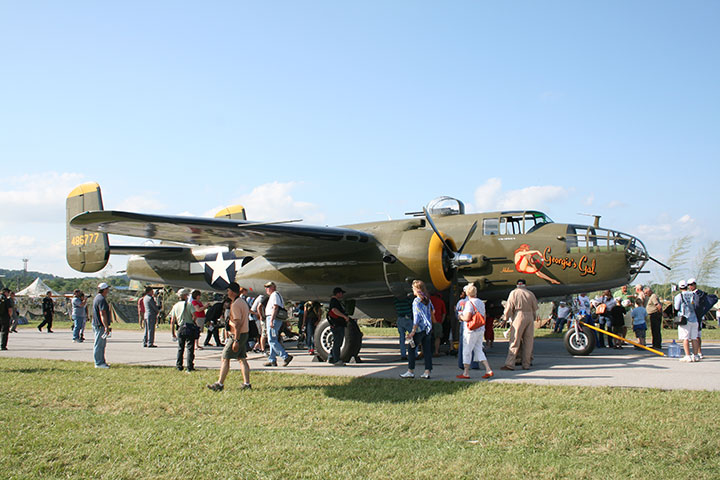
The plant also made parts for the B-25s
produced at the North American B-25 plant in Fairfax, KS. Grand
Rapids, along with many of the other Fisher Body plants, contributed a
large percentage of the airframe components used to build the aircraft.
Author's photo.
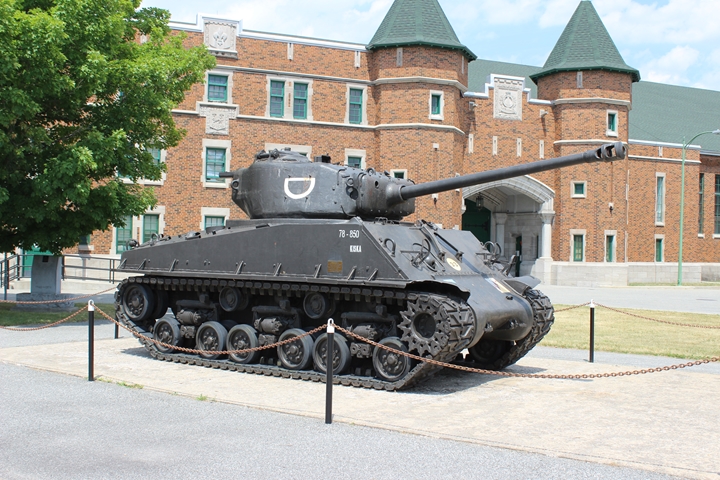
Grand Rapids contributed parts for this M4A2
Sherman tank built by the Fisher Body Grand Blanc, MI Tank Arsenal.
Author's photo.
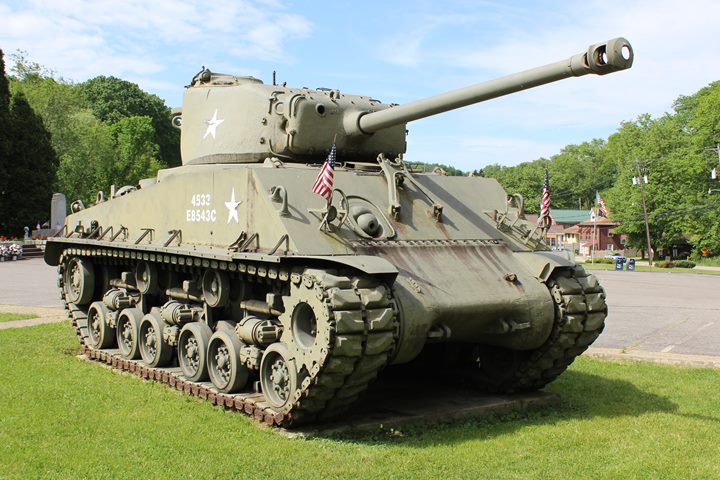
It also manufactured parts for the M4A3
version of the Sherman built at Grand Blanc. Author's photo.
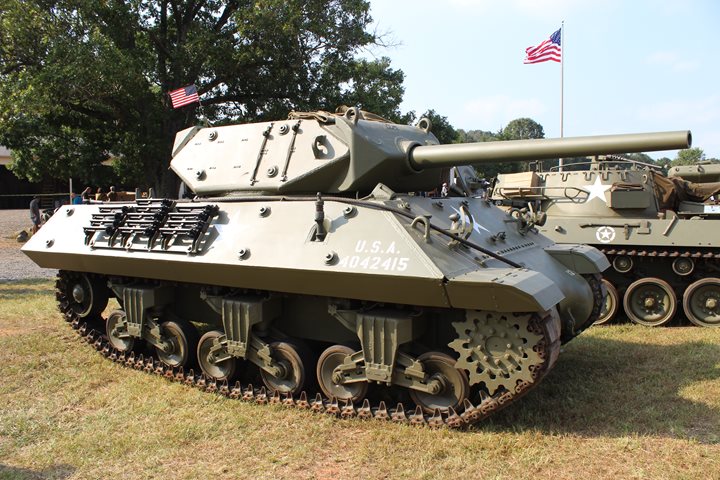
This is a Grand Blanc built M10 tank
destroyer. Grand Rapids furnished parts for this important armored
fighting vehicle. Author's photo.
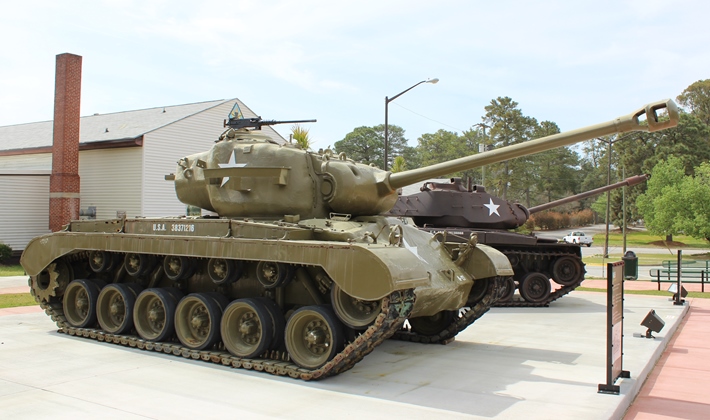
The M26 Pershing was another of the tanks
built by Grand Blanc that Grand Rapids was involved with.
Author's photo.
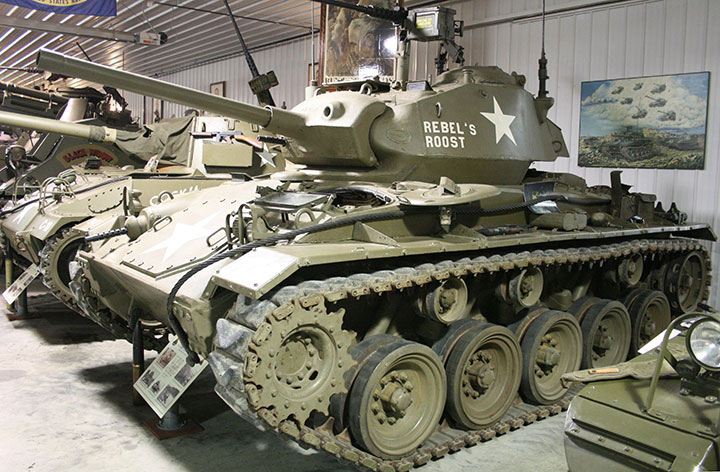
The M24 built by Cadillac had Grand Rapids
Fisher Body parts in it. Author's photo.
The end of the Grand Rapids Fisher Body plant.
The author's photos below were taken on February 18, 2017 of what
was in 2001 one of the most efficient plants in the United States.
From 2001 to 2007 General Motors invested $100 million in the plant,
only to close it in 2008, and put 1,480 persons out of a livelyhood.
The plant was razed in 2011.

The view looking east along 36th Street. The only remaining
structure of significance is the walkway over 36th Street from the
parking lot on the north side of the road. It is surprising that
it was not torn down with the rest of the plant.

The structure that held the sign identifying the Grand Rapids Stamping Plant stands next to a "For
sale" sign.

Looking north west from Buchanan Avenue SW.

Looking south west from Buchanan Avenue SW.
Everything is gone.

Well almost everything is gone. This
security gate for incoming and outgoing trucks and the scale to weigh
them is still there. The power sub-station for the plant can be
seen in the far right of the photo.
|



























-4-75mm-84w-1.jpg)

















